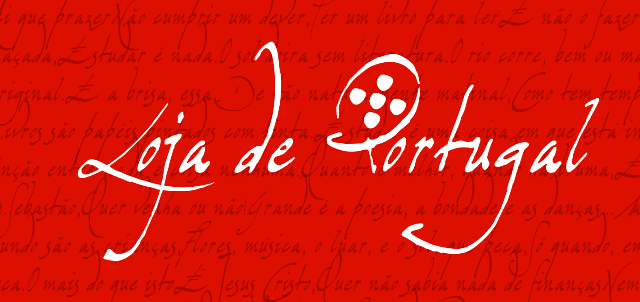A quantidade de apaixonados por Portugal e pela sua cultura milenar é surpreendente. Transcrevo aqui parte do artigo de, Christine H. O'Toole: chris@christinehotoole.com. She is a freelance writer based in Mt. Lebanon.
LISBON, Portugal -- Strolling along the broad Tagus River, its bridges vanishing San Francisco-style in the mist, I see a landscape that tumbles down the hills from blue skies and red-tiled roofs.
I'm falling in love.
With these romantic views, grand public squares, and tiled walkways, I decide that Lisbon is the most gracefully decorated city on Earth. That must be why the Portuguese capital, about the same size as metro Pittsburgh, boasts double the number of museums: Lisboans are all about the visuals.
For the past five centuries, the city has believed in a trinity of vivid traditions: its sailing ships, its iconic ceramic tiles, and the grand, sad music of fado, the music that makes Lisboans happy to cry.
"We are a small country," shrugs the curator at Lisbon's new Tile Museum modestly. But its understated pride shows through in three new city museums that gave me a vivid introduction to this sophisticated port city.
The Gulbenkian Museum, a private art collection, may be the best known museum in town. But the new museums speak to the city's soul. The Orient, with an accent on Portugal's age of exploration, and the Tile Museum, housed in an opulent 16th-century convent, both opened in 2008. The Electricity Museum, an edgy answer to our local Mattress Factory or London's Tate Modern, has just hosted a blockbuster exhibit on the queen of fado, Amalia Rodrigues. None is in the Old City, the capital's charming pedestrian center. But that was just the excuse I needed to navigate the super-efficient transit system and savor the Tagus waterfront from three different perspectives.
The river, now bristling with cranes and cruise ships, is the heart of Portuguese naval history. It was from here that the greatest explorations of the 16th century weighed anchor. Sailing 5,000 miles, the Portuguese reached Goa, India, in 1510, Malacca in 1511, and Macau, China, in 1513. Within a century, they had extended their reach to Indonesia, Japan and the Philippines.
The man who forged the way was Vasco da Gama, who opened the Indian Ocean for the spice trade. He's the namesake of both a soaring bridge and a contemporary development topped by curved glass "sails" in the city's Parc de Nacoes, a newly revived neighborhood. But his legacy remains at the harbor. Overlooking the waterfront from a sleek contemporary building, the Orient Museum holds up a mirror to East and West, showing how each changed the other.
The Orient illuminates the peaceful, prosperous era it calls the "oriental utopia," when Portuguese traders amassed fortunes and treasures. Dramatic darkened galleries spotlight the brilliant collection of "Presence in Asia," with its ornate Chinese screens, tapestries, gold jewelry, painting and ivory pieces. Each carefully selected rarity aims to show the fusion of east and west: Christian art from the school of painting taught by the Jesuits in Macau; Romantic Asian landscapes by painter George Chinnery, capturing Chinese life in the Portuguese trading capital; China trade porcelain. While the museum also mounts contemporary exhibits, this permanent collection is its heart.
Catching a midday bus to the eastern side of town, I was surprised by the number of passengers headed for the Tile Museum. In fact, they weren't; the siesta break sends workers and school children home at lunchtime, giving the city four rush hours instead of two. When I reached the opulent Madre de Deus convent, I had the museum almost to myself.




Sem comentários:
Enviar um comentário
Portugal